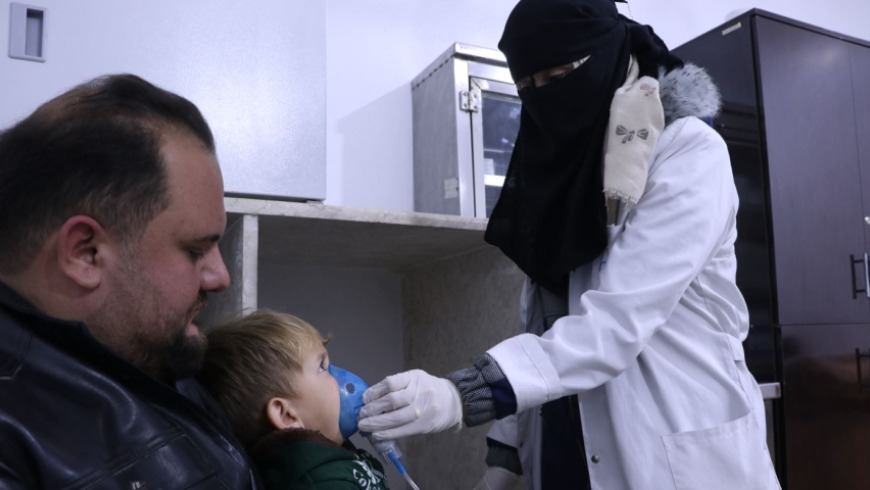The results of the Early Warning Network tests revealed a significant surge in cases of Influenza A (severe acute respiratory disease) across northwestern regions of Syria.
Data indicated a notable increase compared to the annual average over the past five years. PCR analysis results further highlighted a rise in positive cases for both Influenza A and respiratory syncytial virus (RSV).
Dr. Mohammed al-Saleh, a hospital internist and coordinator of the Early Warning Network, emphasized that the prevailing pattern is Influenza A.
Saleh affirmed in statements to the Syria TV website that entire families are falling ill due to this virus, with recorded symptoms including headaches, joint and muscle pains, sore throat, coughing, and high temperatures.
In recent weeks, cases of RSV, known for causing bronchiolitis, have also been documented, particularly among children.
These infections proliferate due to the cold winter season and the usage of inadequate heating materials such as coal, firewood, and nylon. Weak immunity and malnutrition exacerbate symptoms and prolong the duration of infection.
Mohammed Nahas, a 40-year-old displaced person from Maarat al-Naaman residing in Mashhad Ruhin camps in rural Idleb, described the widespread infections, stating that he and most of his family members have been affected, with the contagion spreading among individuals in varying degrees.
He recounted to the Syria TV website, “I had COVID-19 in 2021, and now I’m experiencing similar symptoms. It’s a disease that weakens the muscles and joints. I could barely move. My children and I went to the doctor, and now I’m starting to feel a bit better.”
Nahas expressed concern about the lack of medical facilities in the Mashhad Ruhin camp area, home to approximately 75,000 people, with no medical point, clinic, or ambulance available. Residents face challenges accessing distant medical facilities for treatment.
Ahmed al-Shaaban, residing in Deir Hassan camps, recounted his struggle to transport his five-year-old daughter Hala to Atmeh Hospital. He described seeking transportation amidst unfavourable weather conditions, unable to utilize his motorcycle.
Shaaban recounted having to rely on neighbours to transport his daughter to the Sams-supported children’s hospital in Dana, approximately 15 kilometres away, only to find the beds occupied by other children.
Prevalence of the disease among children
Mrs. Amal al-Ibrahim, 37, originally from Khan Sheikhoun and now displaced, married with four children, resides in Al-Dana in Idleb countryside. She recounts contracting severe influenza, which left her paralyzed. Subsequently, the infection spread to her husband, and her children experienced worsened health conditions, characterized by shortness of breath, dry cough, and fever. n.
Ibrahim, who works as a teacher, observed a prevalent spread of the disease among children, evident from increased absenteeism.
Doctors confirm a notable surge in respiratory illnesses across northern Syria in the past three months, reaching a peak compared to the past five years. Laboratory results indicate that over 70% of cases are attributed to the syncytial virus, with children under the age of 5 constituting 85% of accepted cases for acute respiratory diseases in northern Syria.
This article was translated and edited by The Syrian Observer. The Syrian Observer has not verified the content of this story. Responsibility for the information and views set out in this article lies entirely with the author.


